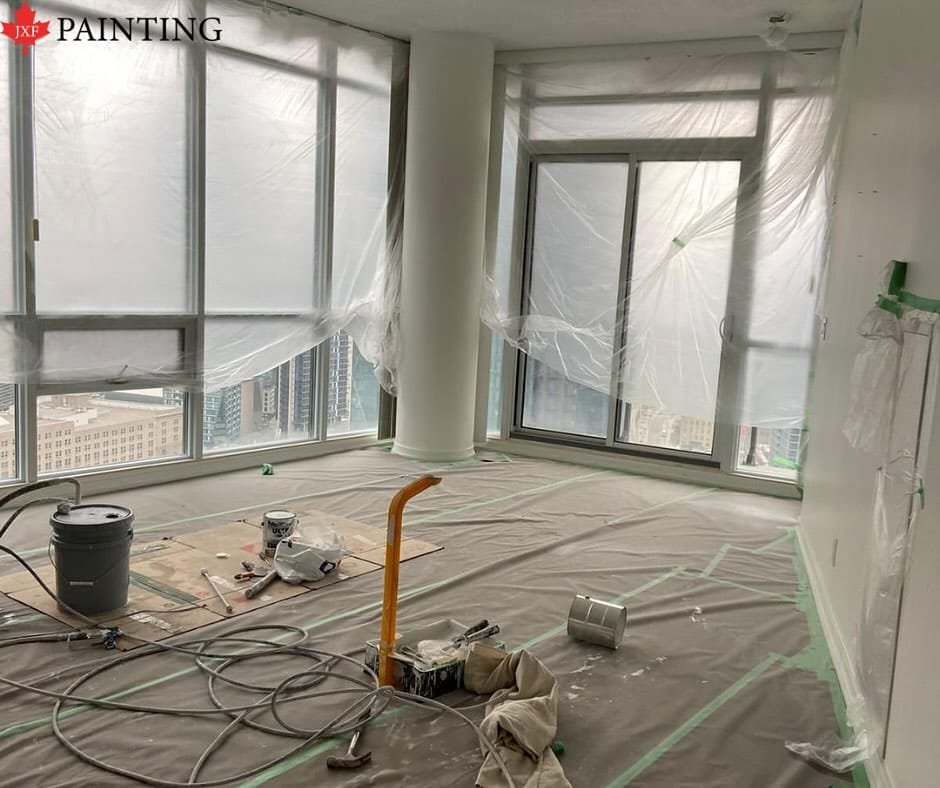For many years, painting has been a common and affordable technique to update and revitalize dwellings. Concerns about paint chemicals and their possible effects have become more important. Customers are becoming more aware of health and environmental issues.
People commonly find the phrase “VOC” on paint labels. What are volatile organic compounds (VOCs) in paint? Why should you think about them when picking supplies for your next painting project?
This guide will help you make smart choices for your home and health. This will explain what volatile organic compounds (VOCs) are.
The discussion will also cover how they affect you. Additionally, it will cover the laws related to VOCs. Finally, it will suggest some alternatives to VOCs in paint.
Volatile Organic Compounds, or VOCs for short, are compounds that contain carbon and readily evaporate at ambient temperature. People use these substances in paint, but they can also harm human health and the environment.
What Are VOCs?
At room temperature, a group of substances called volatile organic compounds easily changes from liquid to gas. This characteristic makes it simple to release them into the atmosphere, a process called off-gassing. VOCs are used in paint formulas for several reasons:
- Improving the application and flow of paint
- Increasing the drying time
- Maintaining the paint in the can and promoting uniform pigment dispersion
While these features improve paint performance, they can harm the environment and human health. This occurs when someone releases volatile organic compounds (VOCs) into the air.
Health and Environmental Impacts of VOC Paint
The release of Volatile Organic Compounds from paint can have significant implications for both human health and the environment. When these chemicals evaporate into the air, they can cause problems that go beyond the area where you are outdoor or indoor painting.
Short-Term Health Effects
Exposure to VOCs during and shortly after painting can lead to a variety of acute symptoms, including:
- Headaches and dizziness
- Nausea and vomiting
- Eye, nose, and throat irritation
- Allergic skin reactions
- Fatigue and confusion
These symptoms are usually strongest during painting and in the days right after. This is when VOC levels are highest.
Long-Term Health Concerns
Prolonged or repeated exposure to VOCs has been associated with more serious health conditions:
- Respiratory and asthma issues
- Liver and kidney damage
- Central nervous system disorders
- Increased cancer risk for certain VOCs
Remembering that the severity of these effects can vary is important. This depends on the specific compounds, the level of exposure, and individual sensitivity.
Environmental Impact
Beyond human health, VOCs can have broader environmental consequences:
- Formation of ground-level ozone, a key component of smog
- Contribution to indoor air pollution
- Potential contamination of soil and groundwater
- Harm to plant life and ecosystems
These environmental impacts underscore the importance of considering VOC content not just for personal health, but also for ecological responsibility.
People at More Risk
These groups of people may be more vulnerable to the harmful effects of VOC exposure:
- Expectant mothers and growing fetuses
- Infants and young children
- Senior citizens
- Individuals who already have respiratory disorders
- Individuals with weakened immune systems
Choosing low- or zero-VOC paint is crucial for these people. It helps reduce possible health problems.
Regulations and Standards for VOC Paint
As people have become more aware of the dangers of VOCs, governments and industry groups have created rules. These rules aim to reduce the use of VOCs in paint and other products.
Government Regulations
In many countries, regulatory bodies have set limits on the allowable VOC content in paints and coatings. These regulations often vary by region and product type:
United States:
- The Environmental Protection Agency (EPA) has established VOC limits for architectural coatings.
- Individual states, particularly California, have implemented even stricter standards.
Canada:
- The Canadian Environmental Protection Act regulates VOC levels in consumer and commercial products.
- Regulators typically set the maximum VOC content for interior paints at 150 grams per litre.
European Union:
- The EU has implemented the Paints Directive, which sets VOC limits for various paint and varnish categories.
Labeling Requirements
To help consumers make informed choices, many jurisdictions require clear labelling of VOC content on paint products. People typically present this information in grams per litre (g/L) and may accompany it with terms such as “Low VOC” or “Zero VOC.”
However, it is important to remember that these terms can mean different things. This depends on the specific regulation or standard that someone references. For example, a paint labelled as “Zero VOC” may still contain trace amounts of these compounds.
Different Levels of Vocs Paint
High-VOC Paints
This category has historically included a large number of oil-based paints with high concentrations of volatile organic compounds. Some industrial paints and special coatings still have high levels of volatile organic compounds (VOCs). This is because of specific performance needs. These paints are less common in homes today.
High-VOC paint characteristics include:
- Strong smell both during and after use
- Extended periods of drying
- possibly increased durability in specific uses
- Increased hazards to the environment and human health
Low-VOC Paints
Low-VOC paints have been created to minimize the release of toxic substances while preserving their high-performance qualities. The term “low VOC” can mean different things to different people. However, it usually refers to paints with a VOC level below a certain limit. This limit is often 50 grams per litre for flat paints.
Benefits of low-VOC paints:
- Reduced odour
- Quicker drying times
- Lower environmental impact
- Decreased health risks for occupants
Non-VOC Paints
Paints with zero or no volatile organic compounds (VOCs) are at the bottom of the VOC spectrum. Volatile organic molecules are either completely absent or present in minuscule concentrations in these items.
Knowing that paints marked as zero-VOC may still contain some volatile organic compounds (VOCs) is important. Even if they label them as such, small amounts can still be present. These levels are usually less than 5 grams per litre.
Advantages of zero-VOC paints:
- Minimal to no odour
- The safest option for sensitive individuals
- Lowest environmental impact
- Immediate occupancy is possible after indoor and outdoor painting
Natural and Bio-Based Paints
Natural and bio-based paints are a new market niche. Manufacturers create them from materials sourced from plants and other renewable resources. These paints may not be VOC-free, but they often have a smaller negative impact on the environment. This makes them a good choice for those seeking eco-friendly options.
Features of natural paints:
- Made from renewable resources
- Often biodegradable
- May have unique aesthetic properties
- Can be more expensive than conventional options
Choosing the Right VOC Paint for Your Project
Selecting the appropriate paint for your needs involves considering various factors beyond just VOC content. Here’s a guide to help you navigate the options and make an informed decision.
Assessing Your Needs
Before choosing a paint, consider the following:
- Location of the project (interior vs. exterior painting project)
- Surface material being painted
- Desired finish and durability
- Occupant sensitivities or health concerns
- Environmental considerations
- Budget constraints
Considering Performance Factors
While low-VOC options have improved significantly, it’s important to ensure the paint you choose meets your performance requirements:
- Coverage and hiding power
- Durability and washability
- Resistance to mildew and fading
- Ease of application
Evaluating Cost vs. Benefits
Low and zero-VOC paints may come with a higher price tag, but consider the long-term benefits:
- Improved indoor air quality
- Reduced health risks
- Potential energy savings from better air quality
- Environmental stewardship
Consulting with Professionals
For large-scale or intricate projects, talking to professional painters in my area or a painting service near me can help. They can give you useful advice on the best low-VOC options for your needs.
Contact Us Today!
Call: (647) 889-5125
Email: info@jxfpaitningservice.ca
Website: www.jxfpaintingservice.ca




